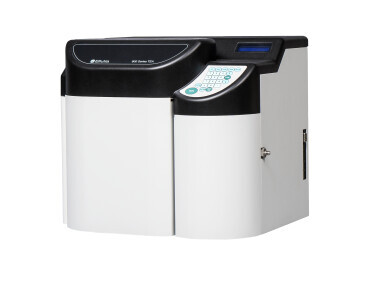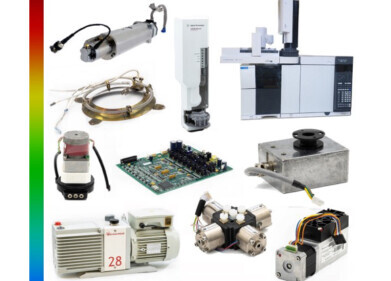Chromatography
What is Bioprocessing? Guide to Upstream & Downstream
Dec 07 2022
From poppy-derived natural alkaloids used to make morphine to oil-rich algae used to distil biofuels, the natural world is abundant with useful products. Bioprocessing describes the art of harnessing the natural properties of living organisms and using them to create end products. The process involves two key stages – upstream and downstream.
Both upstream and downstream bioprocessing are highly specialised and draw on expertise from a myriad of specialised areas, including biology, chemistry, chemical engineering, biochemistry and microbiology. Together, upstream and downstream bioprocessing result in the creation of useful and high-value products. These can be anything from vaccines to fight viruses like SARS-CoV to eco-friendly fuels used to power cars, ships and planes.
Want to know more? Read on as we dive deeper into bioprocessing and some of its different applications.
Harnessing the power of nature
Living organisms are a fundamental part of bioprocessing. They serve as ‘living feedstocks’ and supply scientists with the raw materials needed to create useful products. Sometimes entire organisms are used. Other times individual cells and components are isolated. Overall, the process is split into two defined stages – upstream and downstream. We take a closer look at each below:
Upstream bioprocessing
This describes the earliest stages of bioprocessing. Steps include identifying organisms of interest and developing methods to harvest them from the natural environment, or artificially grow them in labs. The upstream process varies enormously depending on the application. For example, in the pharmaceuticals sector, upstream bioprocessing includes the important step of isolating cell lines of interest. It also includes growing and harvesting these cell lines in labs.
The upstream stage involves preparing media, as well as using bioreactors and incubators to multiply microbes. Technologies like the new ES-20/80C shaker-incubator are reimagining microbial and cell culture cultivation in modern labs. As well as being equipped with a triple eccentric mechanism for superior balance and stability, it features a user-friendly interface and clever tech features like automatic thermostat failure detection and Bluetooth connectivity.
The revolutionary BioContinuum™ Seed Train Platform from Merck is another example of upstream technologies designed to fast-track workflows. Versatile and fully integrated, it empowers biomanufacturers with the confidence to harness seed train intensification tools. Benefits include significant time and cost savings.
The role of bioprocess engineering
Bioprocess engineering falls under the upstream umbrella. It describes the process of optimising environments to support the growth of organisms of interest. The goal is usually to secure a consistent supply of high quality organisms, at the lowest possible cost. When it comes to launching products onto the commercial market, bioprocess engineering has a critical role to play. It allows labs to scale up production and meet the needs of consumers in the most efficient way possible.
When Scottish physician Alexander Fleming discovered a fungus called Penicillium Notatum living in a bacteria called Staphylococcus, bioprocess engineering had an important role to play. Fleming used a combination of microbiology and fermentation engineering to culture Staphylococcus in the lab and scale up supplies of Penicillium Notatum. This is what allowed Fleming to launch penicillin as a widely available pharmaceutical product.
Downstream bioprocessing
Downstream bioprocessing describes the later stages of development and production. This can include the extraction and purification of raw materials such as Active Pharmaceutical Ingredients (APIs). Packaging also falls into the downstream category. For most labs, downstream bioprocessing generally starts when the initial product development stage is complete.
Referring back to the pharmaceuticals example, downstream bioprocessing could involve the purification of cells grown during the upstream stage. All other steps taken to create a finished product fall into the downstream bioprocessing category.
The challenges of bioprocessing
Time
Time is one of the biggest challenges of bioprocessing. Time is generally money in most industries, which is why companies are always on the search for ways to accelerate both upstream and downstream bioprocessing.
Cost
Cost is another major barrier. Most companies have strict budgets to meet when developing new products. Ultimately, the total cost of research, development and production absorbed during the bioprocessing stages shouldn’t exceed total profits.
Optimising cell culture media
Optimising cell culture media is a challenge faced by many companies during upstream bioprocessing. The unique properties of cell culture media formulations can have a big impact on how quickly and efficiently labs can grow and harvest organisms. Moving forward, experts predict artificial intelligence will help optimise the cell culture media development process.
Isolating cell lines
In the biopharmaceuticals industry, detecting and isolating high-quality cell lines is a major challenge. Automated technologies like microfluidics are being used to speed up the cell isolation process and unlock huge time and money savings.
At the University of Utah in Salt Lake City, researchers are using electricity to enhance bioprocessing of cell lines, media and reagents. The technique is called bioelectrocatalysis and uses biological materials to catalyse redox reactions within electrodes.
“Bioelectrocatalysis is an interdisciplinary research field combining biocatalysis and electrocatalysis via the utilisation of materials derived from biological systems as catalysts to catalyse the redox reactions occurring at an electrode,” reads the abstract of an article published in the journal Chemical Reviews.
Applications for bioprocessing
The ability to isolate and extract individual cell lines and components has had exciting applications for a slew of industries.
Bioprocessing and biofuels
The technique is widely used in the biofuels sector, where renewable biomass is used to distil bioethanol. In the book Value-Chain of Biofuels, the authors spotlight CBP as the fermentation method of choice for microorganisms with the capacity to release an enzyme called cellulosome hydrolysis. This breaks down polysaccharide biomolecules into monomeric sugars and creates bioethanol.
Bioprocessing and the fight against antibiotic resistance
Bioprocessing could help address the mushrooming issue of antibiotic resistance, which the World Health Organisation identifies as “one of the biggest threats to global health, food security, and development today.” An increasing number of infections, including salmonellosis, pneumonia, gonorrhoea and tuberculosis are becoming increasingly resistant to antibiotics. In 2019, a group of scientists called the Antimicrobial Resistance Collaborators estimate antimicrobial resistance claimed almost five million lives.
In an article published in the journal RSC Advances, author Usama Ramadan Abdelmohsen explores how bioprocessing can help address the issue. By combining natural living organisms with nanotechnology, Abdelmohsen says the pharmaceuticals industry can combat pathogenic bacteria and multi-drug resistant organisms.
“Nano-formulation of natural products provided many benefits, such as targeted drug delivery, raised component solubility, diminished dose, enhanced absorption, diminished metabolism, and enhanced bioavailability,” reads the article. “This can be carried out by encapsulation of natural products in a convenient carrier system such as nanoparticles, liposomes, and nano-emulsions, which can transform an inadequately available herbal drug into a successfully bioavailable drug candidate.”
Bioprocessing in the food and beverage sector
At the Federal University of Bahia in Brazil, microbiology professor Paulo Fernando de Almeida is carrying out similar research. Electric currents are being used to activate cellular metabolisms, accelerate metabolic responses and increase the release of bioactives. They tested the theory on Saccharomyces cerevisiae, a species of yeast used to make wine, bread and beer. Results indicate the application of electric currents in the microamps range boost ethanol production by 10%.
“We work with biophotonics and bioelectrostimulation to control microorganisms, from their stimulation to produce bioactives to their elimination in case of a need to kill them, inhibit them, or reduce their number as in harmful organisms,” explains Almeida. “Our results indicate that electrostimulation is a low-cost booster of bioprocesses.” From an economical perspective, the potential to fast-track metabolic responses is extremely beneficial.
Bioprocessing and vaccine development
While vaccines like Pfizer and Moderna are now widely recognised, smaller companies like British American Tobacco (BAT) are exploring new ways to develop vaccines for infectious viruses and diseases. The British based biotech company teamed up with subsidiary Kentucky BioProcessing to explore the use of tobacco plants to scale up vaccine production.
“BAT copied a portion of the genetic sequence of the coronavirus antigen BAT developed; this is the substance that induces an immune response in the body and the production of antibodies,” explains a company representative. “This sequence is then inserted into the plants for rapid multiplication production and, once the plants are harvested, the antigen is then purified, conjugated (or combined) with the TMV scaffold that allows it to effectively be carried into your cells where it can work.” At full capacity, the Kentucky-based manufacturing plant can produce up to three million antigen doses per week.
By 2027, analysts predict the global vaccine market will surpass US$85 billion. The increase in demand for viral-based products will present a unique set of challenges for the industry, particularly when it comes to manufacturing scalability. Find more about the challenges ahead and how techniques like chromatography are being used to improve, economise and scale-up downstream processes in ‘Optimising Viral Vector Purification Strategies with Multimodal Chromatography’.
Digital Edition
Lab Asia 31.2 April 2024
April 2024
In This Edition Chromatography Articles - Approaches to troubleshooting an SPE method for the analysis of oligonucleotides (pt i) - High-precision liquid flow processes demand full fluidic c...
View all digital editions
Events
Apr 28 2024 Montreal, Quebec, Canada
May 05 2024 Seville, Spain
InformEx Zone at CPhl North America
May 07 2024 Pennsylvania, PA, USA
May 14 2024 Oklahoma City, OK, USA
May 15 2024 Birmingham, UK


















